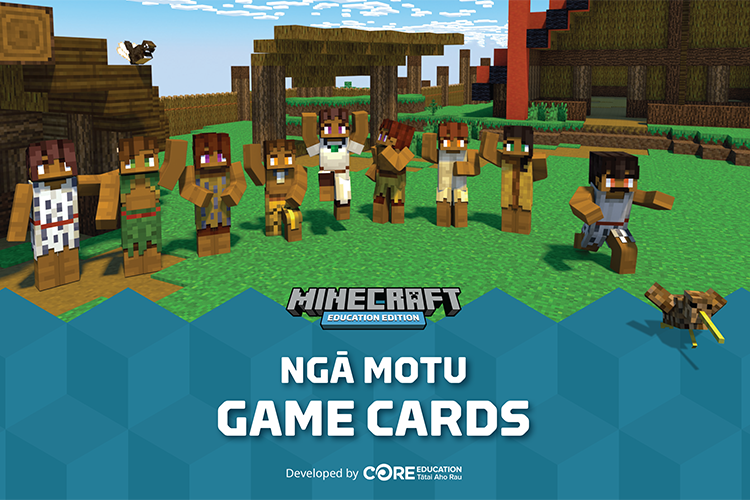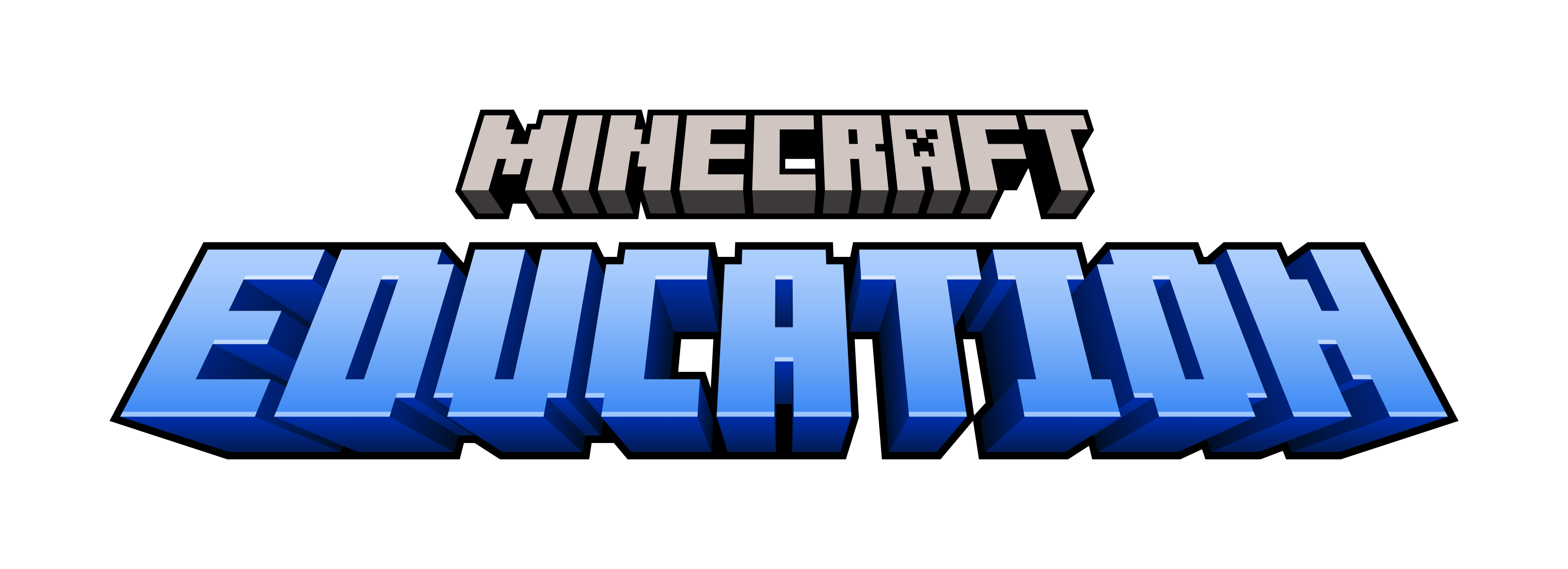Ngā Motu Digital Technology: how ngā motu learning cards are making te reo more accessible to kiwi kids
06 Aug 2021
“Māori have always been a people of technology. Minecraft is just the latest in a long line of technologies which we have used to kōrero (tell stories).” -Whetu Paitai, Programmer at Piki Studios
Ngā Motu, a Māori world for Minecraft: Education Edition, has been helping students better understand te reo Māori, the language of New Zealand’s Indigenous people, since its launch in 2019. To further support its role in the classroom, Microsoft has created companion learning resources so New Zealand teachers can use Ngā Motu to support their digital technology curriculum. Educators worldwide can also use these resources to deepen their students’ engagement with this unique culture.

A MĀORI WORLD IN 16X16 BLOCKS
Ngā Motu (The Islands) is a classic pā (fortified village) built inside Minecraft: Education Edition by Piki Studios’ Whetu Paitai. Students can explore the fictional island and its built environment, meeting whānau (family) from the local hapū (tribe), who help explain the layout and use of the area while teaching the students te reo vocabulary and pronunciation. Students engage with the history of their land, the Indigenous people of New Zealand, and their cultural values while they gain confidence with digital tools, all within the familiar and fascinating world of Minecraft.
Ngā Motu was an immediate hit with teachers and students, but its initial launch was still a proof of concept. Minecraft’s open-world nature meant that while students and teachers could interact with the world in whichever way they preferred, it was difficult to know whether the lessons they were putting into practice fit into the prescribed learning outcomes of the New Zealand curriculum. At the same time, the technological nature of Ngā Motu and the concepts of Te Ao Māori (the Māori world) were both potential barriers to engaging with the product for some teachers. Many educators who reached out wanted to put this resource to use, but they lacked the confidence to do so in a way that lined up with the curriculum and was culturally inclusive.
LESSONS BUILT FOR ALL STUDENTS ON A MĀORI FOUNDATION
Recognizing the need to align Ngā Motu with the curriculum and make it more accessible, Microsoft reached out to CORE Education Tātai Aho Rau, an organization that develops rauemi (resources) to support educators and learners with a strong equity-first mindset. CORE Education had also provided training to educators on the use of Minecraft: Education Edition in the past, so they were the logical choice for the project. Working alongside Microsoft’s education team, Piki Studios, and specialist designers, CORE Education developed a set of lesson plans using Ngā Motu that fit in with New Zealand’s digital technology curriculum for levels 3 and 4 for students in year 6-8, in both te reo and English mediums. This approach meant that there was a structure available for classrooms who needed it, while still allowing for spontaneous discovery—a feature of Ngā Motu since its launch.
The team created special learning cards to provide students with engaging activities that build knowledge, inspire exploration, and encourage creation. Learners can design a virtual pōwhiri (welcome ceremony) to invite visitors into their worlds. They can build a small whare (house) that provides fire and shelter, then share their creations with their classmates. They can even work together to cultivate and develop new land for their community!
“Anything that is produced for a New Zealand education context should be built on a bicultural foundation,” says Gemma Stewart, a former bilingual teacher who was a key part of the CORE team on the project. In line with this philosophy, CORE Education developed lessons and resources around Ngā Motu in a Māori context first, before they developed English language resources. It was a key part of the process to understand the whakapapa (lineage) of Ngā Motu so that anything built on top of the product would be true to Whetu’s original vision.
The process was driven by an understanding of the kaupapa (purpose) of the original project and integrating those principles into the curriculum. “There’s a tendency in education to develop resources in Te Ao Pakeha (the Western worldview) first and then just translate the words,” Gemma says. “We knew that this project had to be based on Te Ao Māori first.”
The English resources allowed a broader audience to access the lessons without departing from the original whakapapa of the Ngā Motu project. It was important that language wouldn’t be a barrier for teachers who wanted to engage with Te Ao Māori but might have lacked confidence in the past.
“DESIGN IS CRITICALLY IMPORTANT FOR CONVEYING TE AO MĀORI”
Once the lesson plans were developed, Microsoft and Piki Studios worked alongside Maui Studios, a Māori-owned-and-operated design agency, to develop the look and feel of the learning resources for use in the classroom.
Maui Studios operates with a tikanga-first (culture-first) mindset, and the organization works primarily on Kaupapa Māori projects informed by mātanga (experts). It was important for Maui that the resources conveyed Te Ao Māori in a way that was accessible for tāngata whenua (Indigenous people), which would then flow on to a broader Pākehā and tauiwi (non-Māori) audience as well. “Design is critically important for conveying Te Ao Māori,” says Vincent Egan, who led the project for Maui. “The patterns and symbology utilized in the resources play an important role in creating context for the lessons in Ngā Motu, so we wanted to make sure it reflected the guidance of our mātanga.”
For example, the resources make extensive use of patterns to do with wai (water), which reflects not only the water in the world of Ngā Motu, but also movement and flow, as well as the changing media through which Te Ao Māori is understood, from carvings and tā moko (tattoo) to the digital environment of Minecraft.
Since finalizing the resources, CORE Education has been introducing them to teachers through a series of webinars to provide educators confidence and structure for lessons.
PREPARING STUDENTS FOR THE MODERN WORLD
With the help of these new resources, Ngā Motu and the opportunities for learning it creates are more accessible to New Zealand students than ever. All state and state-integrated schools have access to Minecraft: Education Edition, and now that there are structured learning resources associated with Ngā Motu, every student and teacher can approach the subject, confident that they’re aligning with the curriculum.
There are substantial benefits for students, who get to have fun while they learn and build crucial digital skills as they gain a greater understanding of the history of Aotearoa and the values of its Indigenous people. Feedback on the new resources from educators has been extremely positive, with teachers feeling less intimidated by the technology and concepts. Instead, they’re able to focus on the richness of learning for their students.
“Students in 2021 face unprecedented challenges,” says Lydia Kronawetter, Microsoft New Zealand’s Education Lead. “Between ongoing disruptions to the school year and a constantly changing world, it’s more important than ever that students have strong digital and cultural skills.”
Learning tools like Ngā Motu can play a key part in preparing students for life after school. Learners need to leave school with digital abilities, and an understanding of their region’s history and culture can be just as important. “Te Ao Māori shouldn’t be just a standalone subject,” Gemma says. “In order to teach it properly, it needs to be integrated across the curriculum.” Learning with Ngā Motu allows students to improve their digital skills and learn about Te Ao Māori in an engaging environment that doesn’t feel like just another lesson.
Integrating resources like Ngā Motu into the curriculum is just one way to ensure that students stay excited about their learning journey as they build skills and knowledge they’ll need in the modern world.
***
If you’d like to explore the world of Te Ao Māori, you can find lesson plans and download the learning cards here. Students may also review a related video from our YouTube channel to learn more about this story. For educators new to Minecraft: Education Edition, begin your journey at education.minecraft.net/get-started.


